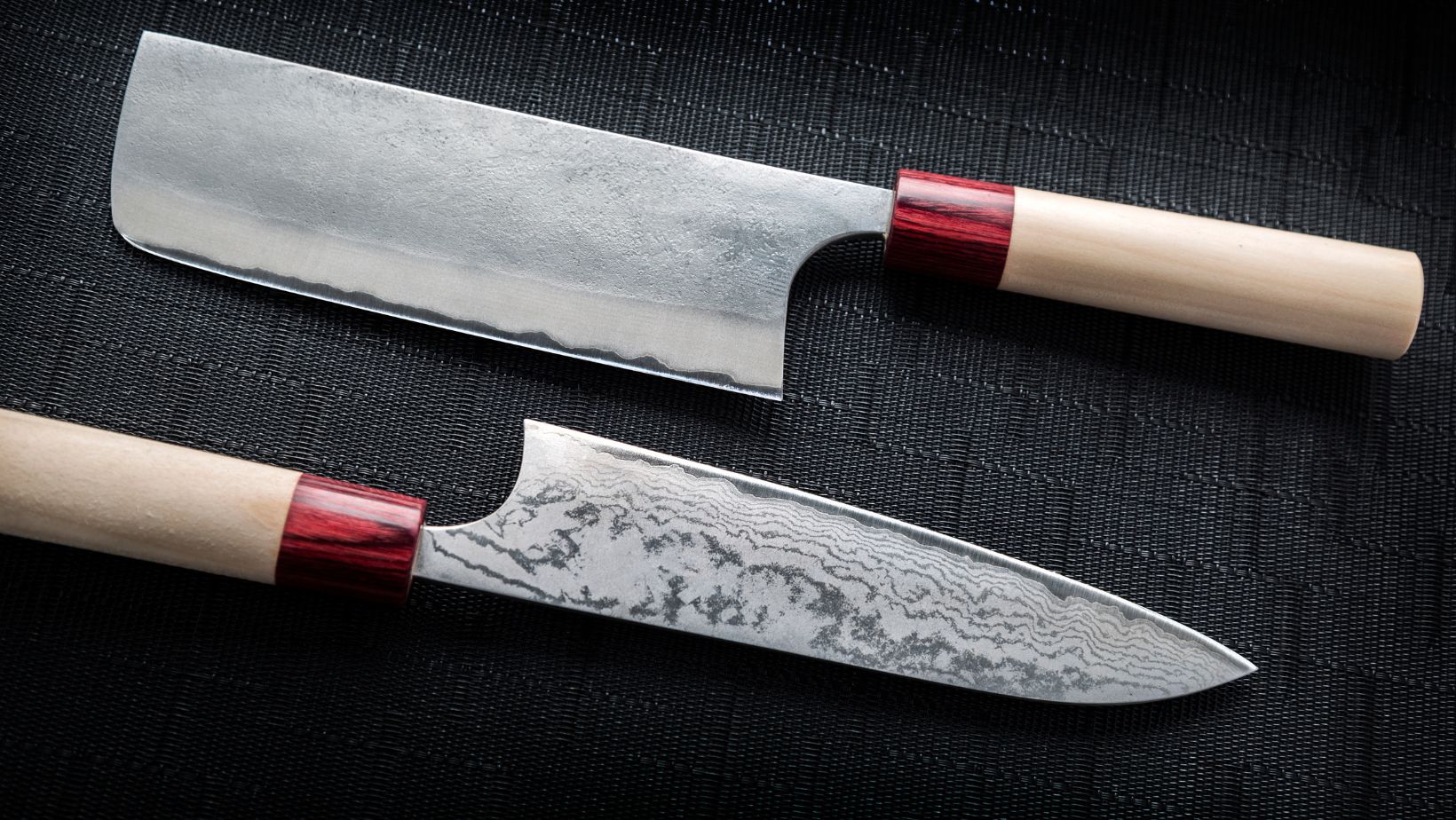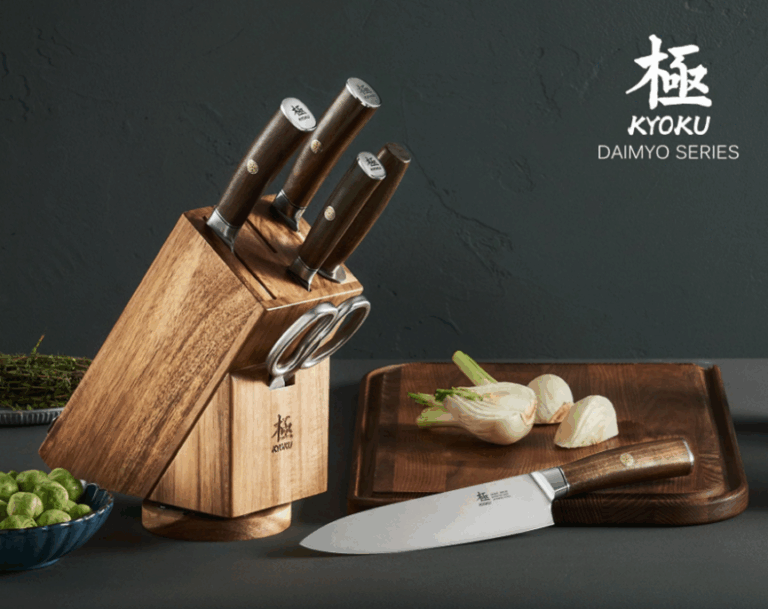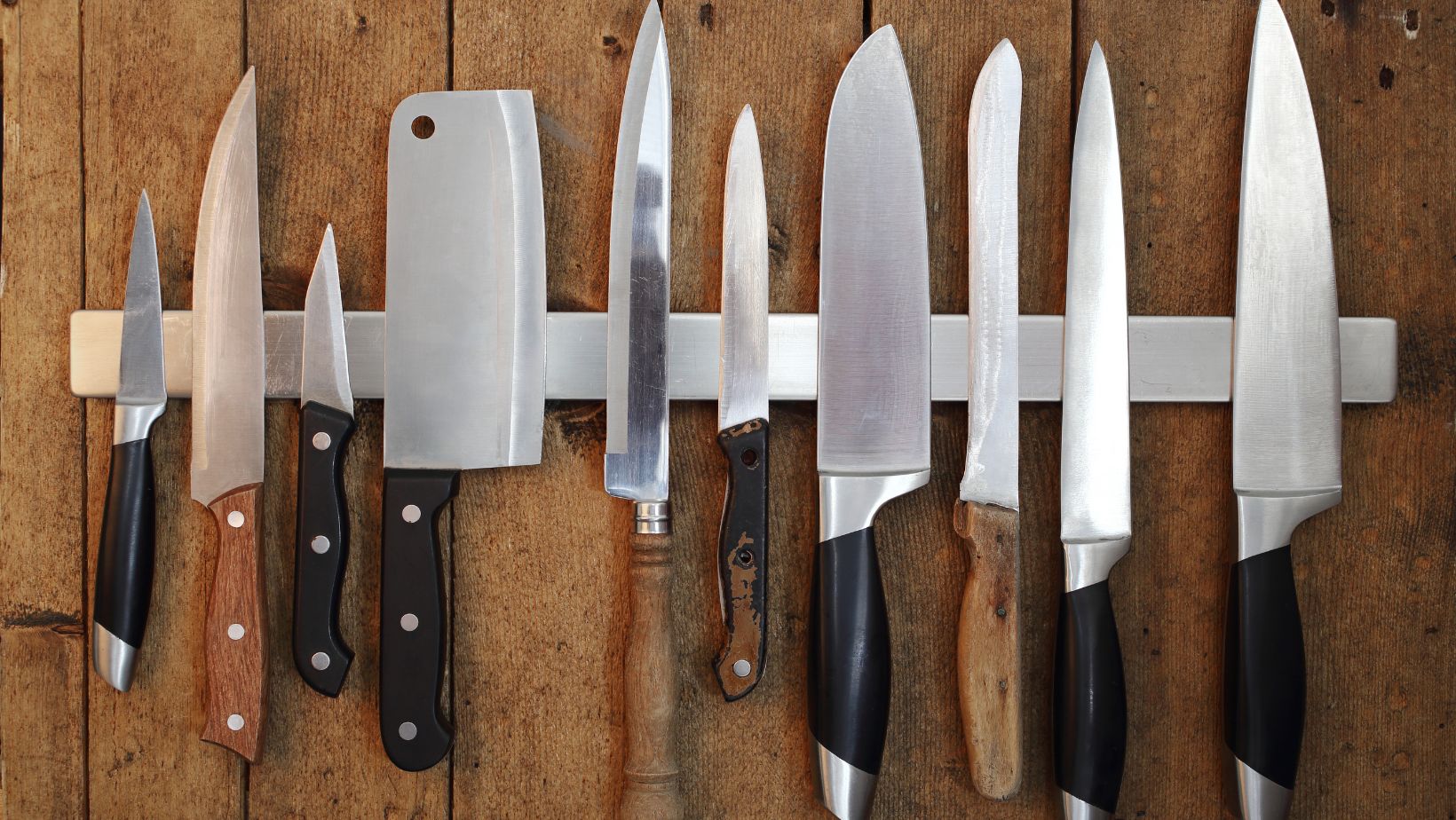Last Updated on September 27, 2025 by pm_author_91ksj
Introduction
A good knife set is the backbone of every kitchen. Whether you’re slicing through a perfectly seared steak, filleting a delicate piece of salmon, or dicing fresh vegetables for a stir-fry, the right knife makes all the difference. Japanese knives, in particular, are prized for their precision, sharpness, and centuries-old craftsmanship. If you want to elevate your cooking, building a Japanese knife set tailored to meat, fish, and vegetables is a smart place to start.
What Makes Japanese Knives Unique?
Japanese knives are more than just cooking tools—they’re the product of centuries of tradition. Inspired by the techniques used to forge samurai swords, these blades are thinner, sharper, and often lighter than their Western counterparts. Instead of relying on one all-purpose knife, Japanese cutlery emphasizes specialization, with different knives designed for specific ingredients and cutting styles. That’s why chefs and home cooks alike turn to Japanese knives when precision truly matters.
Essential Knives for Meat Preparation
When it comes to preparing meat, the right knife ensures clean cuts and preserves flavor.
- Gyuto (Japanese Chef’s Knife): Think of this as the Japanese equivalent of the Western chef’s knife. It’s versatile enough for slicing steaks, trimming fat, and chopping vegetables, making it an essential centerpiece of your set.
- Honesuki (Boning Knife): This triangular blade is designed for breaking down poultry and working around joints with ease. It’s all about precision where a larger knife would feel clumsy.
- Sujihiki (Slicing Knife): Long, narrow, and razor-sharp, the Sujihiki is perfect for carving roasts or slicing meat into thin, elegant cuts without tearing fibers.
Essential Knives for Fish Preparation
Japanese cuisine is deeply rooted in seafood, so it’s no surprise that some of the most iconic knives were designed with fish in mind.
- Yanagiba: The sashimi knife of choice. Its long, single-bevel blade makes clean, delicate cuts that preserve the texture of raw fish—perfect for sushi lovers.
- Deba: A thick, sturdy knife used to fillet whole fish and cut through small bones. Despite its heft, it’s designed for precision and control.
- Usuba (crossover tool): Although primarily a vegetable knife, the Usuba’s precision makes it a useful option for garnishes and fine seafood presentation.
Essential Knives for Vegetable Preparation
Japanese cooking often emphasizes fresh vegetables, so naturally, there are knives designed just for the task.
- Santoku: A popular, versatile knife that excels at slicing, dicing, and chopping vegetables. Its name translates to “three virtues,” representing meat, fish, and vegetables—making it a true multi-tasker.
- Nakiri: With its straight edge and rectangular blade, the Nakiri is tailor-made for precise vegetable chopping, especially when you want even slices.
- Usuba: A traditional single-bevel knife prized by professional chefs for decorative cuts and paper-thin vegetable slices.
Building Your Japanese Knife Set
If you’re new to Japanese knives, you don’t need to buy them all at once. A simple starter set could include:
- Gyuto for all-purpose tasks.
- Santoku for quick veggie work.
- Yanagiba for anyone who enjoys sushi or sashimi at home.
For more serious cooks, consider adding the Nakiri, Deba, and Sujihiki to round out your collection. The key is balance—choose knives that fit your cooking habits and budget. Quality Japanese knives can last a lifetime when properly cared for, so think of them as an investment in your cooking journey.
Care and Maintenance of Japanese Knives
A high-quality knife deserves proper care. Unlike many Western knives, Japanese knives should always be treated with extra attention.
- Sharpening: Use a whetstone instead of pull-through sharpeners to preserve the blade’s edge and shape.
- Cleaning: Hand wash your knives immediately after use—never put them in the dishwasher.
- Storage: Protect your blades with knife guards, a magnetic strip, or a wooden block to avoid dulling or chipping.
With consistent care, your knives will stay razor-sharp and ready for every meal.
Conclusion
The right Japanese knife set transforms everyday cooking into an art form. Whether you’re slicing meat, filleting fish, or chopping vegetables, each knife is designed to do its job with unmatched precision. 




